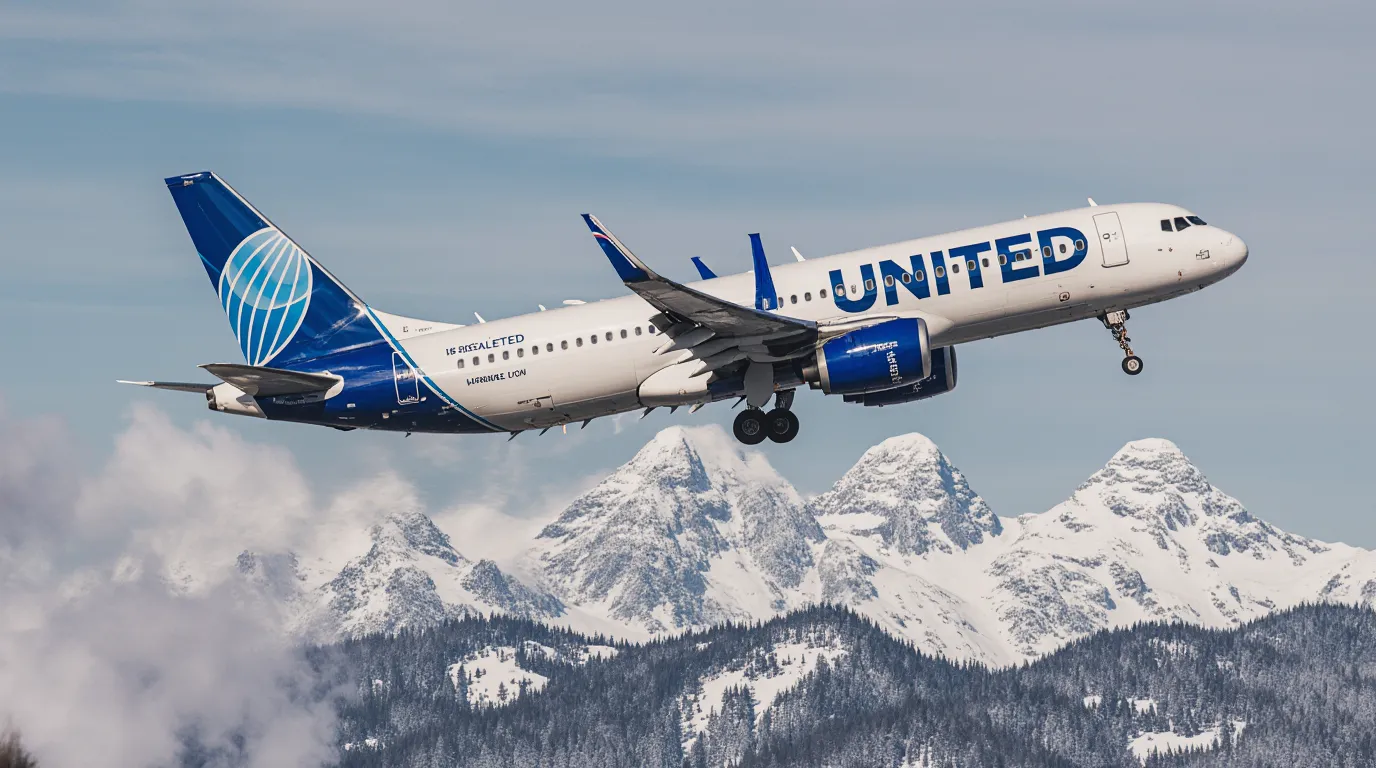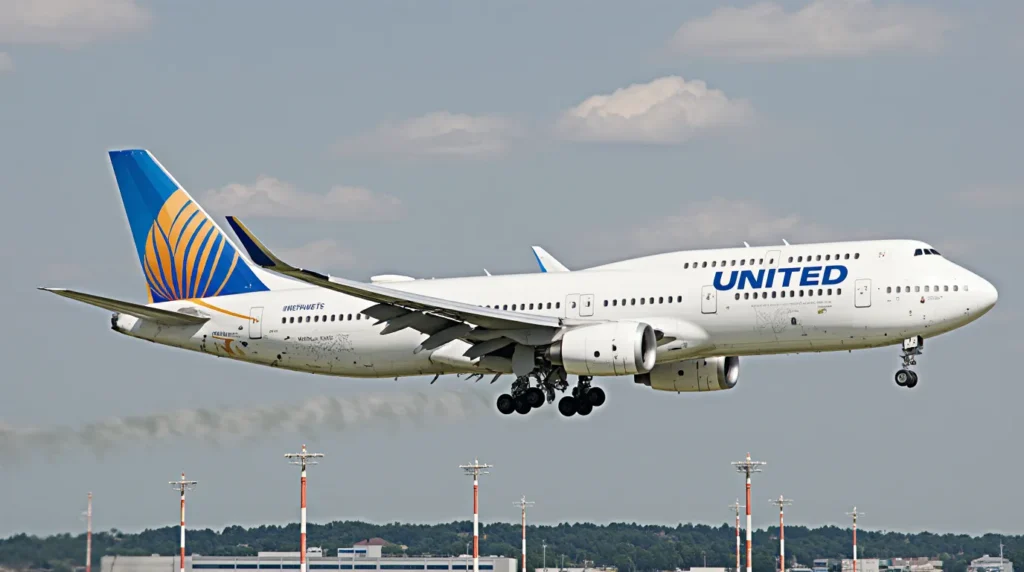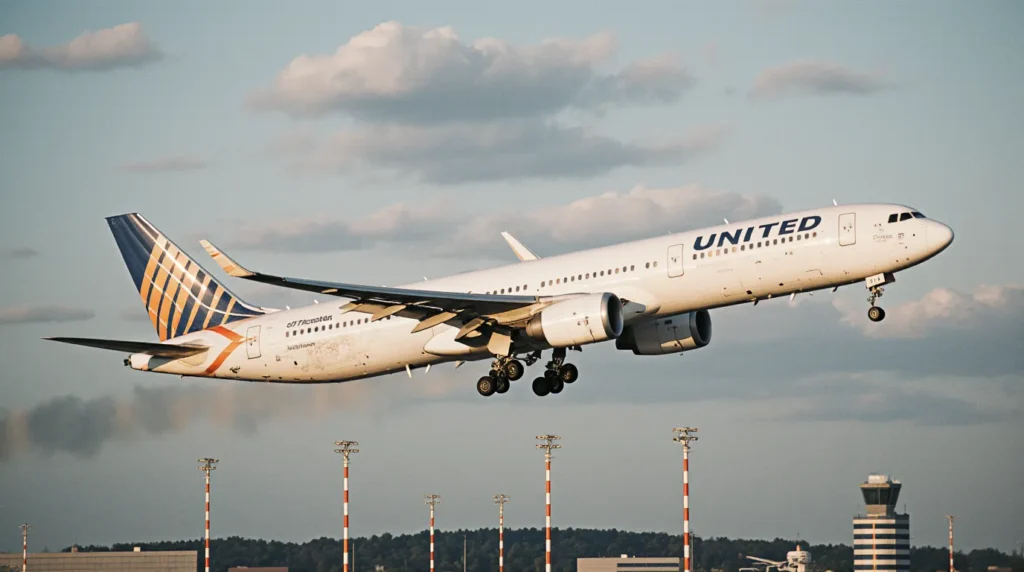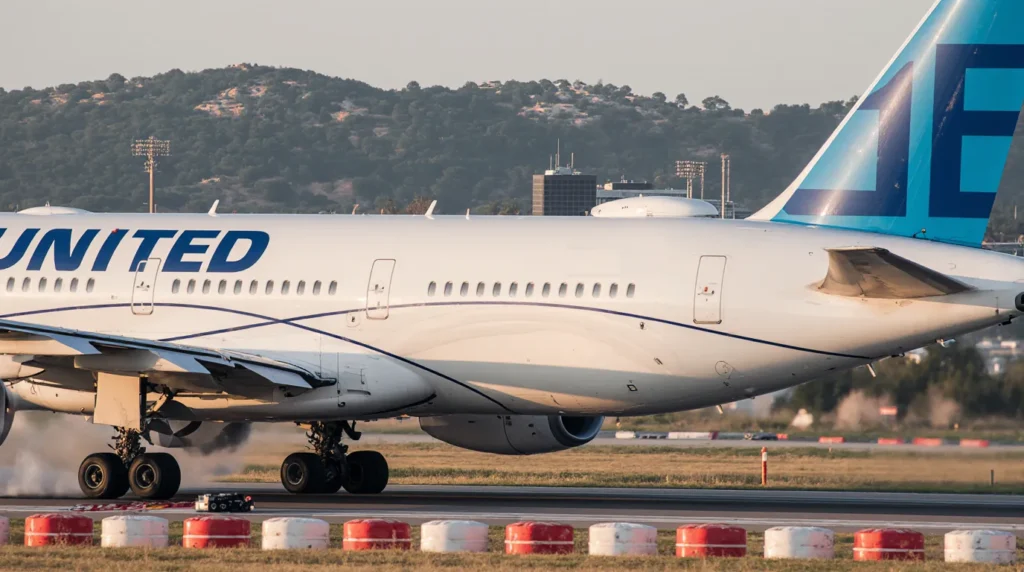
United Airlines Flight UA770 Emergency Diversion
A recent aviation incident highlighted the critical importance of emergency protocols during the United Airlines Flight UA770 emergency diversion to London Heathrow Airport. The Boeing 787-9 Dreamliner, en route from Barcelona El Prat Airport to Chicago O’Hare, declared a mid-air emergency, triggering immediate response protocols across multiple aviation authorities.
Emergency diversions represent a vital safety measure in commercial aviation, allowing flight crews to address potential risks swiftly. These calculated decisions protect hundreds of lives aboard aircraft and maintain the aviation industry’s commitment to passenger safety.
The UA770 incident unfolded with the flight crew’s declaration of an emergency through a squawk 7700 code – the international distress signal. Key aspects of the situation included:
- Swift decision-making by the flight crew to divert
- Selection of London Heathrow as an appropriate emergency landing site
- Coordinated response from air traffic control and ground teams
- Safe landing on Runway 27R at approximately 4:55 PM BST
The aircraft’s successful landing at Gate B44 demonstrated the effectiveness of emergency protocols and the high level of training among aviation professionals. Ground engineers conducted thorough inspections during a planned one-hour stopover, ensuring the aircraft’s airworthiness before any subsequent operations.
Table of Contents
United Airlines Flight UA770 Emergency Diversion Background Information

The United Airlines Flight UA770 emergency diversion involved a Boeing 787-9 Dreamliner, registration N26902 — a state-of-the-art aircraft known for its fuel efficiency and passenger comfort. The Dreamliner features advanced technology including:
- Composite materials reducing aircraft weight
- Enhanced cabin pressure systems
- Larger windows with electrochromic dimming
- Improved air filtration systems
The flight’s planned route stretched across the Atlantic Ocean, departing from Barcelona El Prat Airport (BCN) – Spain’s second-busiest airport serving over 52 million passengers annually. The intended destination was Chicago O’Hare International Airport (ORD), one of the world’s largest aviation hubs handling over 83 million passengers yearly.
During its journey through European airspace, the aircraft’s crew activated the emergency squawk code 7700 – a universal distress signal in aviation. This four-digit code alerts Air Traffic Control (ATC) to prioritize the affected aircraft:
Squawk 7700 immediately triggers emergency protocols across all ATC facilities, clearing airspace and preparing ground emergency services.
The significance of squawk codes in aviation:
- 7500 – Aircraft hijacking
- 7600 – Radio communication failure
- 7700 – General emergency
These standardized codes enable rapid response regardless of language barriers or communication difficulties. When activated, the code appears on ATC radar screens, prompting immediate action from controllers managing the affected airspace sector.
The flight path traversed several major European air traffic control zones, including:
- French airspace (DSNA)
- UK airspace (NATS)
- North Atlantic corridor
This strategic positioning allowed multiple diversion options to major airports equipped for emergency situations, with London Heathrow selected as the optimal emergency landing location.
Mid-Air Emergency Declaration and Diversion to London Heathrow Airport

The crew of United Airlines Flight UA770 demonstrated exceptional quick thinking when they declared a mid-air emergency during their flight from the US to Europe. This declaration triggered a series of immediate actions involving various aviation authorities and control centers.
Key actions taken during the emergency declaration:
- Immediate Communication: The flight crew established priority contact with air traffic control
- Route Assessment: Quick evaluation of nearby suitable airports for emergency landing
- Passenger Management: Flight attendants prepared the cabin for potential emergency procedures
- Resource Coordination: Activation of ground emergency response teams at London Heathrow
The decision to divert to London Heathrow Airport was strategic because of its:
- Advanced emergency response capabilities
- Multiple runway configurations
- Extensive ground support infrastructure
- Expert medical facilities on-site
Throughout the situation, the flight crew maintained a careful balance between urgency and calmness. Their professional handling of the emergency prevented panic among passengers while ensuring that aviation authorities were appropriately informed about the situation.
Safety protocols activated during the diversion included:
- Continuous monitoring of aircraft systems
- Regular updates to air traffic control
- Preparation of cabin crew for various scenarios
- Coordination with ground teams at Heathrow
The incident highlighted the aviation industry’s unwavering commitment to passenger safety, as evidenced by reports such as the IATA’s Safety Report, which outlines the industry’s ongoing efforts to enhance safety measures. Each decision made by the flight crew prioritized minimizing risk and ensuring the well-being of everyone aboard. Their actions exemplified the rigorous training and preparation that airline personnel undergo for such scenarios.
The successful handling of this mid-air emergency serves as a testament to United Airlines’ safety culture and the effectiveness of established emergency protocols. The crew’s decisive action in declaring an emergency and diverting to London Heathrow demonstrated the critical importance of prioritizing safety over schedule adherence.
Emergency Landing Procedures at London Heathrow Airport
The United Airlines Flight UA770 emergency diversion and subsequent landing at London Heathrow Airport demonstrated the facility’s exceptional readiness for critical situations. The Boeing 787-9 Dreamliner touched down on Runway 27R at 4:55 PM BST, following standard emergency landing protocols.
Landing Sequence:
- Air Traffic Control cleared all other aircraft from the approach path
- Emergency response vehicles positioned along the runway
- Aircraft maintained a stabilized approach at optimal speed
- Smooth touchdown executed with immediate deployment of thrust reversers
- Controlled deceleration with minimal brake usage
The aircraft’s path to Gate B44 involved precise coordination between ground control and the flight crew. Ground marshals guided the aircraft through designated taxiways, maintaining clear communication channels throughout the process.
Post-Landing Timeline:
- 4:55 PM – Aircraft touchdown on Runway 27R
- 5:05 PM – Arrival at Gate B44
- 5:10 PM – Passenger disembarkation begins
- 5:15 PM – Ground engineering team commences inspection
- 5:20 PM – Technical assessment of aircraft systems
Ground engineers conducted a thorough inspection focusing on:
- Primary flight control systems
- Engine performance parameters
- Hydraulic system integrity
- Electrical system functionality
- Structural components
The engineering team’s swift response allowed for a comprehensive safety assessment within the planned one-hour stopover window. Their systematic approach included real-time data analysis from the aircraft’s monitoring systems and physical inspections of critical components.
London Heathrow’s established emergency protocols ensured minimal disruption to regular airport operations during this incident. The airport’s dedicated emergency response teams maintained positions near the aircraft until technical clearance was confirmed, adhering to standard safety procedures for diverted flights experiencing mechanical complications. Such incidents highlight the significance of managing in-flight emergencies as a pilot, a skill that proved invaluable in this situation.
Professionalism and Communication During the Crisis
The United Airlines Flight UA770 emergency diversion incident showcased exemplary professionalism from both the flight crew and emergency response teams. The cabin crew maintained composure throughout the emergency, delivering clear instructions to passengers while managing potential anxiety and stress.
Key aspects of professional conduct during the crisis included:
- Calm Demeanor: Flight attendants maintained their composure, setting a reassuring tone for passengers
- Structured Communication: Regular updates provided to passengers about the situation and next steps
- Coordinated Response: Seamless collaboration between cockpit crew and cabin staff
- Passenger Support: Individual attention to passengers requiring special assistance
The flight crew’s communication strategy proved crucial in maintaining order:
“The captain’s announcements were clear, concise, and reassuring. They kept us informed without causing unnecessary alarm,” reported one passenger.
Emergency response teams demonstrated their expertise through:
- Rapid deployment of resources
- Clear chain of command
- Efficient information sharing between ground and air crews
- Professional handling of passenger concerns
The incident highlighted the significance of effective crisis communication protocols, which include:
- Initial emergency announcement
- Regular status updates
- Clear instructions for emergency procedures
- Post-landing guidance
The crew’s ability to manage information flow prevented panic and confusion among passengers. Their professional conduct reflected extensive training in emergency protocols and crisis management. This level of preparedness enabled them to handle the situation while maintaining passenger confidence in the airline’s safety procedures.
Notably, this incident also underlined the importance of standardized communication protocols in aviation emergencies, as demonstrated by the synchronized efforts of the emergency response teams. Their ability to coordinate actions across multiple teams while maintaining clear communication channels proved essential to the successful handling of the situation.
Potential Causes and Handling of In-Flight Emergencies by Airlines

While United Airlines has not officially disclosed the specific cause of Flight UA770’s emergency, several potential factors could have triggered the need for immediate diversion:
Common Mechanical Issues:
- Engine performance irregularities
- Hydraulic system malfunctions
- Pressurization system complications
- Electrical system disruptions
- Aircraft control surface problems
In-flight Complications:
- Fuel system anomalies
- Navigation equipment failures
- Weather-related challenges
- Medical emergencies requiring immediate landing
- Cargo hold issues
Airlines follow strict protocols when investigating emergency incidents. The process typically involves:
- Immediate ResponseAircraft grounding for thorough inspection
- Documentation of all flight data
- Collection of crew statements
- Preservation of evidence
- Investigation PhaseAnalysis of flight data recorder information
- Review of maintenance records
- Technical examination of affected systems
- Consultation with aircraft manufacturers
United Airlines, like other major carriers, maintains dedicated teams of safety investigators who work alongside regulatory authorities to determine root causes. These investigations serve multiple purposes:
- Identifying potential fleet-wide issues
- Implementing preventive measures
- Updating safety protocols
- Enhancing crew training programs
- Improving emergency response procedures
The airline industry’s commitment to passenger safety drives continuous improvement in emergency handling procedures. Each incident provides valuable data that helps airlines refine their safety protocols and emergency response strategies. This systematic approach to incident investigation ensures that lessons learned from each emergency situation contribute to the enhancement of aviation safety standards.
Crisis Management Strategies Implemented by United Airlines
United Airlines showcased excellent crisis management during the United Airlines Flight UA770 emergency diversion. The airline’s response plan was activated immediately after the crew declared an emergency, triggering a coordinated series of actions:
1. Real-Time Communication Network
The airline established direct communication channels between the flight crew and ground control, ensuring that information flowed smoothly and decisions could be made quickly.
2. Ground Support Mobilization
In preparation for the flight’s arrival, United Airlines took proactive measures to ensure a swift response on the ground. This included preparing the designated gate for immediate docking, positioning emergency response vehicles strategically, and having a technical team ready for an immediate inspection of the aircraft.
The airline’s crisis management team implemented a multi-faceted response strategy:
1. Passenger Care Protocol
Understanding that the diversion would impact passengers, United Airlines swiftly deployed customer service representatives to assist those affected. They immediately assessed the situation to determine how connecting flights would be impacted and made arrangements for accommodations if necessary.
2. Operational Continuity
In order to minimize disruptions caused by the diversion, United Airlines took proactive steps to maintain operational continuity. This involved reallocating resources quickly, planning alternative flights for passengers who were affected, and coordinating with partner airlines to explore potential assistance options.
United Airlines’ integrated approach to crisis management demonstrated their strong emergency response system. The smooth coordination between flight operations, ground services, and airport authorities showcased the effectiveness of their established protocols.
The decision-making process employed by the airline prioritized:
- Immediate safety concerns
- Operational efficiency
- Passenger comfort
- Resource optimization
This response emphasized the significance of having pre-established emergency procedures in place and highlighted the value of regular crisis management training.
The successful handling of Flight UA770’s diversion serves as a model for effective airline emergency response strategies.
Unpredictability in Air Travel and Airline Preparedness for Emergencies
The United Airlines Flight UA770 emergency diversion highlights a critical reality in aviation: even the most advanced aircraft can encounter unexpected challenges. The Boeing 787-9 Dreamliner, renowned for its cutting-edge technology and reliability, demonstrates that modern engineering cannot eliminate all potential risks in air travel.
How Airlines Address Safety
Airlines implement multi-layered safety protocols to address various scenarios:
- Pre-flight Safety Checks: Comprehensive aircraft inspections, weather condition assessments, route planning and fuel calculations
- In-flight Emergency Procedures: Clear communication protocols, alternative landing site identification, emergency equipment readiness
Maintaining Safety Standards
The aviation industry maintains strict safety standards through:
- Regular crew training simulations
- Updated emergency response protocols
- Real-time weather monitoring systems
- Continuous aircraft performance tracking
These safety measures proved crucial during the United Airlines Flight UA770 emergency diversion, where the flight crew executed precise protocols while maintaining aircraft control. The incident serves as a reminder that airlines must prepare for various scenarios:
- Medical emergencies
- Technical malfunctions
- Weather-related challenges
- Security concerns
The Role of Modern Aircraft
Modern aircraft incorporate sophisticated warning systems and redundant safety features. The Dreamliner’s advanced monitoring capabilities helped identify the potential issue early, allowing the crew to take preventive action before any escalation.
Investing in Emergency Preparedness
Airlines invest significantly in emergency preparedness through:
“Safety is not a one-time investment but a continuous process of improvement and adaptation to new challenges”
- Regular safety audits
- Updated emergency manuals
- Enhanced crew training programs
- Advanced communication systems
- Partnerships with emergency response teams
The aviation industry’s approach to safety demonstrates that while air travel inherently carries risks, robust preparation and swift response capabilities minimize potential impacts on passenger safety.
Operational Challenges Faced by Airlines During Peak Travel Seasons

Peak travel seasons present airlines with complex operational challenges, magnified during emergency situations like the United Airlines Flight UA770 emergency diversion. These challenges require careful management of resources and swift decision-making to maintain both service quality and passenger safety.
Key Operational Pressures During Peak Seasons:
- High passenger volumes stretching airport capacity
- Limited gate availability for emergency diversions
- Increased strain on maintenance crews
- Complex rebooking requirements for connecting flights
- Weather-related disruptions affecting multiple routes
The United Airlines Flight UA770 emergency diversion to London Heathrow exemplifies these challenges. During peak travel periods, finding available gates for unscheduled landings becomes particularly demanding. Airlines must coordinate with airport authorities to secure priority landing slots while managing the ripple effects on other scheduled flights.
Impact on Service Quality:
- Delayed departures affecting connection times
- Extended wait times for alternative flight arrangements
- Pressure on customer service representatives
- Limited accommodation options for stranded passengers
- Disrupted baggage handling systems
Airlines implement strategic measures to address these challenges:
- Maintaining reserve aircraft for emergency situations
- Cross-training staff for multiple roles
- Establishing partnerships with local hotels
- Creating flexible rebooking policies
- Deploying additional ground staff during peak periods
The successful handling of the UA770 emergency demonstrates how airlines can effectively balance safety priorities with operational demands. This incident showcases the importance of maintaining robust emergency response protocols even during high-traffic periods when resources are stretched thin.
Airlines must continuously adapt their strategies to handle unexpected diversions while maintaining service standards. This includes investing in advanced scheduling systems, enhancing staff training, and developing comprehensive contingency plans specifically designed for peak season operations.
FAQs (Frequently Asked Questions)
What was the emergency situation involving United Airlines Flight UA770?
United Airlines Flight UA770 emergency diversion occurred after a mid-air emergency forced the aircraft to deviate from its original route between Barcelona El Prat Airport and Chicago O’Hare, resulting in an emergency landing at London Heathrow Airport.
What does squawking code 7700 signify in aviation emergencies?
Squawking code 7700 is an internationally recognized transponder code used by pilots to declare a general emergency, alerting air traffic control and other aircraft of a critical situation requiring immediate attention and priority handling.
How did the flight crew manage the emergency diversion to London Heathrow Airport?
The flight crew promptly declared a mid-air emergency and decided to divert United Airlines Flight UA770 to London Heathrow Airport. They prioritized passenger safety by coordinating with air traffic control for a safe landing on Runway 27R and ensured clear communication to minimize passenger panic during the crisis.
What procedures were followed during the emergency landing at London Heathrow Airport?
Upon declaring the emergency, United Airlines Flight UA770 landed safely on Runway 27R at London Heathrow Airport and was directed to Gate B44. Ground engineers swiftly responded to inspect the aircraft, ensuring that all safety protocols were adhered to during this critical phase.
How does United Airlines handle in-flight emergencies like that of Flight UA770?
United Airlines employs comprehensive crisis management strategies which include immediate declaration of emergencies by flight crews, effective coordination with airport emergency services, thorough inspection of aircraft post-landing, and transparent communication to maintain passenger safety and confidence.
What challenges do airlines face during peak travel seasons when managing unexpected diversions?
During peak travel seasons, airlines like United face operational challenges such as balancing high passenger volumes with maintaining service quality and safety. Unexpected diversions require swift coordination with airport services and efficient crisis management to minimize disruption while ensuring passenger well-being.



